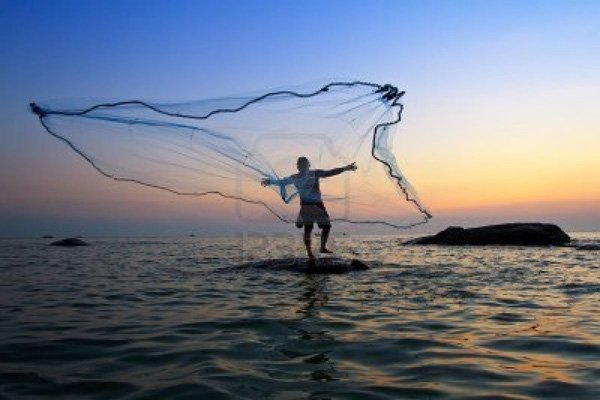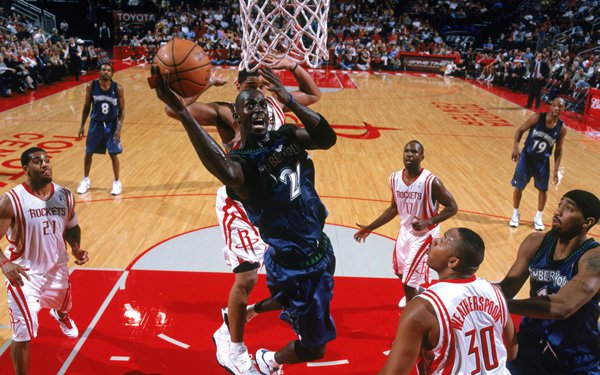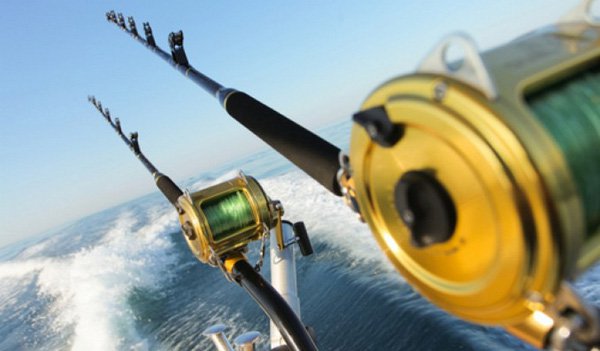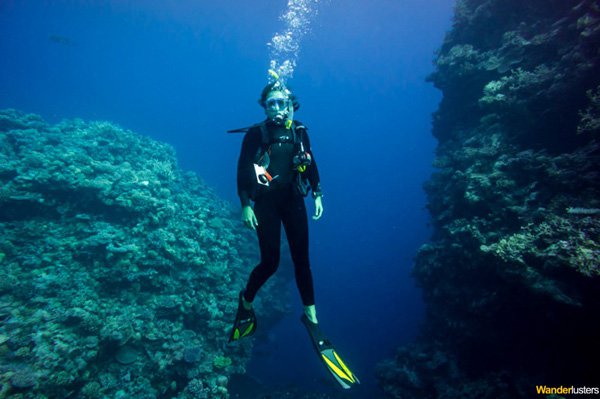
I often see on many of the Lake Ontario and Lake Michigan message boards the question, "How fast should I troll when fishing for Great lakes trout and salmon?" The answer is, "it depends." Speed can be dependent on several factors including, but not limited to, species of fish being sought, time of year, depth and clarity of water, what lures are being run in the spread, and sometimes just the plain old mood of the fish. This article will attempt to answer and shine some light on the varying aspects of effective fishing speed while trolling, especially in Lake Ontario.
First and foremost, "what is effective trolling speed?" The answer is really quite simple," the one that generates bites!" This is not meant to be a smart allic answer but it is meant to point out that there is in fact, a correct trolling speed that will produce the most bites. The correct trolling speed as indicated in the introduction can and does vary. In the spring of the year, most Lake Ontario salmonids inhabit the shallower part of the water column and/or the warmest part of the lake. Species such as Brown trout are known to inhabit the areas in and around warm water discharges. Salmon are known to frequent these types of areas, too. One thing for certain is that both species are there to feed on baitfish in the shallower water.
Some of the best lures to run for shallow water spring fish are stickbaits and flutter spoons. Typically, in these colder, shallow waters fish tend to like a slower speed in the 1.8mph range or so. But, not always! You will notice by sticking your rod tips underwater boat side and watching that these types of lures will have the proper action. This is a good speed to start with, but it is not carved in stone. There will be days when you may need to go faster or slower than this to trigger strikes. The fish will let you know that you're doing it right when the rods go off. This is where I will experiment if I'm not getting bit. If I'm seeing fish activity in the area either with electronics or on the surface, I will either speed up or slow down until I get bites, paying attention to my surface speed as I do so. This way I can duplicate the effective speed for that situation. If I determine that I am not getting bites because I am not on fish then I will tend to troll at the upper speed limits of what my lures will take and cover water until I at least find fish or get bit. If I am in strange waters I may even tweak my presentation by adding lures that have been adjusted to carry faster speeds allowing me to cover more water in less time in hopes of finding fish.
During the summer fishing on the eastern end of Lake Ontario out of the port of Oswego we typically find our king salmon deep in the water column. While trolling deep water the go to trolling speed is almost always in the 2.2 to 2.4mph range at depth as measured with a Cannon SNT speed and temperature unit . If we are not getting bites while being on fish this will be one of the last things we will change. More often than not we will change lures and colors to trigger bites, not speed. When it comes to trolling speed during the summer it seems to be more important to maintain it and keep it constant, especially when trolling flasher/ flies. This is where lake and wind conditions along with underwater currents can dictate what direction you will have to troll in to maintain speed consistency and trigger bites. This is one of the reasons why on some days you can only get bit going in one direction because that MAY BE THE ONLY DIRECTION THAT YOUR BOAT can hold speed and not crab.
Along about staging time when the king salmon gather outside their pre-natal streams and rivers, the speed required to trigger strikes changes. The kings seem to want a slower presentation than they did during the summer months. There will come a time during mid to late August where the down speed that worked so well all summer long quits working. That 2.2 to 2.4mph down speed that was producing limit catches earlier acts like someone turned the bite off with a light switch. Last year we had to slow down to get those Lake Ontario King salmon to bite. The Coho salmon liked that slower speed, too! On some days our downrigger cables were literally hanging straight down when trolling with the current and only with slight blowback when trolling in the opposite direction. One sure way to tell when it's time to slow down is when you are only catching Coho when everyone else is catching Kings.
Having the right trolling speed when fishing Lake Ontario and other Great Lakes can make all the difference in the world and can turn a mediocre day into an exceptional one. Knowing where to start based upon species and seasonal preferences can put you on track to having successful outings. Matching speeds to the baits being used and vice versa at the right time and location is one of the keys to boxes full of salmonids at the end of the trip. Learning how to maintain speed during different lake conditions is another facet of trolling, especially during the summer months when trolling deep water. As you spend more time on the water it is a good idea to factor in the surrounding conditions in regards to the effects on speed and the bites it generates. This can only help to better get you dialed in and have a more enjoyable outing.
9 Tips to Improve Your Vertical Jump

Delph Fishing Charter: Perfect Destination for Fishing Activities

Kate Winslet Invited to Return to Titanic with Richard Branson

Copyright © www.mycheapnfljerseys.com Outdoor sports All Rights Reserved